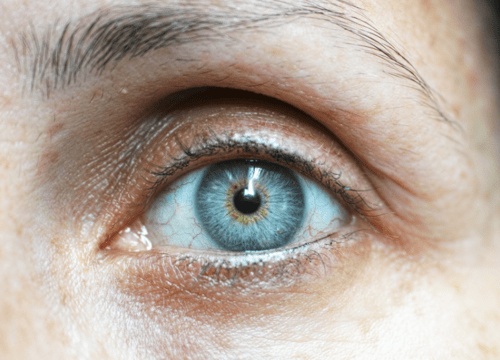How to protect your eyes from skin cancer
When you think of skin cancer, you might think of an ugly mole or freckle somewhere on your skin – maybe on your cheeks where they’ve seen too much sun, or your shoulders where you tend to tan. But the reality is that skin cancer can develop anywhere – inside your mouth, between your toes, under your fingernails, and even on your eyes.
Similar to the way it damages your skin, the sun’s UV radiation reaches you in invisible wavelengths and causes DNA changes that can lead to skin cancer on your eyelids, premature ageing in the delicate surrounding skin, and even damage your eyes themselves.
Around five to 10 per cent of all skin cancers develop on the eyelids, and at least 10 per cent of cataract cases are attributed to UV exposure.
UV radiation can cause serious eye conditions including:
- Cataracts – The most common cause of treatable blindness, cataracts cloud the eye’s lens and cause progressive vision loss.
- Macular degeneration – A major cause of vision loss for people aged 60+, macular degeneration can be caused by UV damage to the retina.
- Corneal sunburn – Also known as ‘snow-blindness’, corneal sunburn is the burning of the cornea caused by UV exposure, which can be magnified on bright, reflective surfaces like snow, water and ice.
- Conjunctival cancers – A malignant disease of the eyes that can lead to loss of vision and, in severe cases, death.
When it comes to cancers on the eye, the most common eye cancer in adults is ocular melanoma. However, this disease has no known association with UV radiation.
You are far more likely to develop cancer on the skin around your eyes – especially the eyelids. Basal cell carcinomas account for about 90 per cent of eyelid cancers; squamous cell carcinomas account for five per cent; and one to two per cent of eyelid cancers are melanomas.
Most eyelid cancers occur on the lower lid because of its exposure to the sun. You can learn more about eyelid skin cancers on our blog post here.
Left untreated, skin cancers around the eye can be very dangerous, with the potential to spread into the eye itself and cause tissue damage and blindness.

How to protect your eyes from UV radiation
You don’t need to hide from the sun to protect your eyes from its harmful effects. You just need to take some precautions when enjoying the outdoors, such as:
- Wear sunglasses that block 99-100 per cent of both UVA and UVB radiation.
- Wear a broad-brimmed hat that shades your eyes. Hats can block as much as half of all UV rays from your eyes and skin.
- Apply a broad-spectrum, SPF50+ sunscreen all around your face and as close to your eyes as you can get. Close your eyes and carefully apply the sunscreen to your eyelids.
- Don’t be fooled by cool or cloudy weather. The sun’s UV radiation is invisible – it can’t be seen or felt like the sun’s light or heat – and it isn’t always reduced by cloud cover.
- Seek shade whenever you can, and especially in peak UV times between 10am and 4pm.
- Be careful in high altitudes, where the UV intensity increases.
- Take extra care near water, snow and sand. About 80 per cent of UV rays reflect off these bright surfaces, so they contact your eyes and skin a second time.
- See an optometrist and your doctor regularly, so any problems can be caught early.
